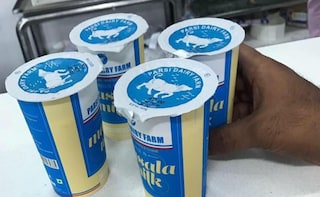I was at a modern food superstore in Bandra, Mumbai’s swish suburb, the other day. I walked past rows of imported gourmet cheeses, pastas and meats when I suddenly spotted a group of blue coloured packs which looked as if they were cheerfully waving at me. A closer inspection showed that they were packs of the homegrown Parsi Dairy ghee. I am a Bengali married to a Parsi as you probably know. I remembered that Freddy (Firoz) Kerawala, my maternal uncle-in-law, is a big advocate of the Parsi Dairy Farm butter and ghee. I decided to buy a pack of ghee for home to add to my stock of Jharna ghee from Kolkata as a tribute to the spirit of what Parsi author Meher Pestonji referred to as “mixed marriage”.
Advertisement
Advertisement
Advertisement
Advertisement
For the latest food news, health tips and recipes, like us on Facebook or follow us on Twitter and YouTube.
Advertisement
